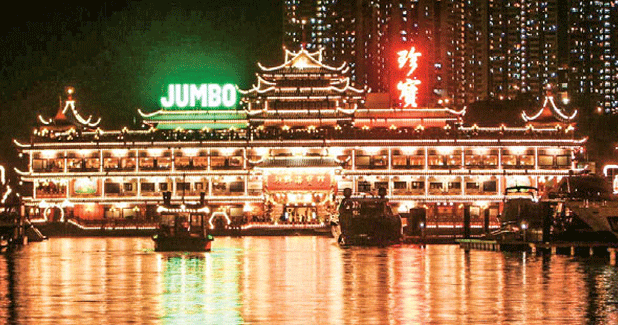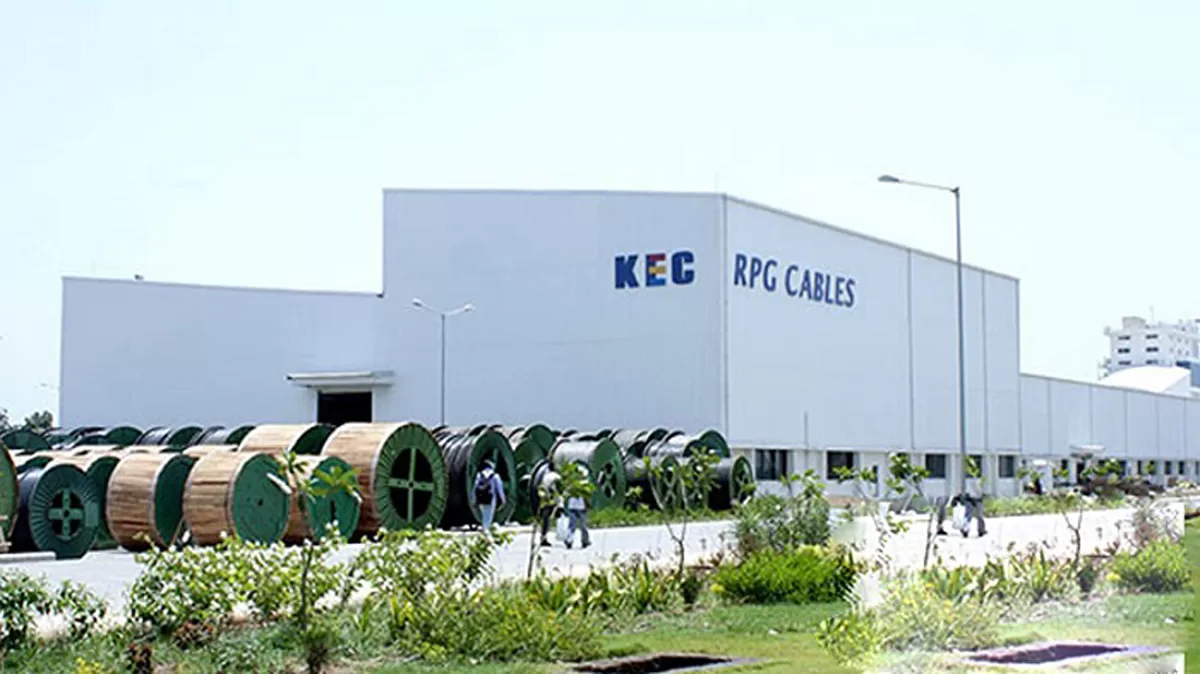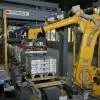CM WANG takes a global tour focusing on floating entertainment facilities across the world and the technology behind such architectural marvels.
The increasing global phenomenon of coastal land pressure highlights the ongoing historical attraction to living in close proximity to the ocean. Given the unprecedented acceleration in the growth of the world´s population, urban development towards and along coastlines has produced challenges as urban planners engage with the lack of space and demands on amenities. The significant advantage of moving development to the adjacent offshore area is the potential to reduce the impact of urban development on inland resources such as arable land, green belts and other nature reserves. This shifts the current discourse on balancing urban population growth and its accompanying urban encroachment to one that looks at a sensitive colonisation of adjacent offshore areas to meet demands for land, energy and food. Ocean space colonisation is one way in which engineers, architects and urban planners have been engaging with the challenge of providing more space, minerals and energy resources for people.
The use of large-scale floating structures offers significant advantages over land reclamation. These include:
- Rapid deployment and ease of construction.
- Flexibility in deployment
- Suitable for deep water or soft seabed conditions.
- Constancy with respect to water surface.
- Earthquake resistance.
- Less disruptive to the environment.
- Modular units providing extra floor space.
Large-scale floating structures can be broadly classified as pontoons and semi-submersibles.
Pontoons
Pontoons are essentially floating slabs characterised by their low depth-to-width ratios and are usually deployed in a benign sea-state condition such as in waters adjacent to the coast inside a cove or a lagoon, or where breakwaters and other protective installations can be constructed to protect the structure from large waves and swells. In order to restrain lateral movements, they may be anchored to the seabed through the use of mooring lines comprising chains, ropes, sinkers, anchors or tethers. Where greater restraint is necessary, the pier or quay wall method or the dolphin-frame guide mooring system may be adopted. Pontoons are generally cost-effective with low manufacturing costs and are relatively easy to repair and maintain.
The main components of a pontoon are the floating body, mooring facility, access bridge or gangway or linkway or floating road and the breakwater.
Semi-submersibles
Semi-submersibles have a structural form that is thicker than their pontoon counterparts and have been deployed in deep sea environments since as early as the 1970s. They are partly raised above the sea level using column tubes or watertight ballast structural compartments at the base to compensate for the effects of larger wave lengths and heights. Floating oil drilling platforms and semi-submersible type floating wind farms are typical examples of this category of floating structures. While semi-submersibles are often towed, some models are hybrids between a pure static floating structure and a marine vessel with their own propulsion system for short-range transport. When deployed to the required location, these floating structures are then attached to the seabed using mooring cables or tethers.
Floating entertainment facilities
As extensions to cities, urban planners have begun to supplement the existing urban environment by programming cultural and recreational functions into floating facilities. These enable a city to expand its ability to cater to the needs of its growing population and enhance coastal living.
Restaurants: Floating structures are popularly employed for use as floating restaurants, giving diners panoramic views of the surrounding sea. An icon of Hong Kong is the famous floating Jumbo restaurant, on a 24 m + 24 m + 3.2 m pontoon. Similarly, Japan has a small floating restaurant in Yokohoma and this timber floating structure was built in 1992. The pier, next to the restaurant, is also a floating structure.
Hotels: Floating accommodation facilities such as hotels and dormitories have also been created in recent times.
A seven-storey, five-star floating hotel, the Four Seasons, was built in Singapore in 1988 and towed to its site at the Great Barrier Reef near Townsville, Australia. Its inherent mobility was used to advantage during cyclone events where it was left anchored at a single point and allowed to move with the wind, reducing resistance and damage. The hotel was later towed to Ho-Chi-Minh, Vietnam, and later to North Korea. Canada also has a floating hotel, the King Pacific Lodge Princess Royal Island, located in British Columbia. And Japan has an amusement facility that has been created on a large floating island (130 m + 40 m + 5 m) at Onomichi, Hiroshima. It houses a 3-D theatre, aquarium and marina.
Performance stage: Completed in 2007, the floating platform at Singapore´s Marina Bay is the world´s largest floating performance stage. The platform is designed to be a multipurpose facility on the bay for mass spectator events, sporting activities and cultural performances. The inherent mobility of its component parts has also been incorporated in its design function, ensuring that the structure can be reconfigured for use as a mobile dock for water sports and boat shows. Made entirely of steel, the floating platform measures 120 m + 83 m + 1.2 m, which is 5 per cent larger than a soccer field. It hosts the nation´s National Day parade, fireworks festival and water carnival.
Floating islands
The Floating Islands of Han River in Seoul are part of a manmade archipelago in South Korea comprising three islets: Viva, Vista and Terra. The project was developed to enhance the urban relationship of the South Korean capital, Seoul, with the Han River, with the artificial islands (made from steel) housing convention halls, restaurants and other tourist attractions. The design of the three islets exemplifies innovative use of solar-power technology and clever utilisation of the inherent advantage of a floating structure to deal with the problem of varying sea levels.
More recently, Waterstudio.NL designed the Greenstar, a floating hotel for 800 overnight guests and conference centre for 2,000 delegates off the Maldives in the Indian Ocean. The Greenstar will boost residential capacity for the tiny island of Maldives. These floating extensions to the city become crucial strategies for island nation-states under threat from rising sea levels. Given the significance of tourism to its economy, the Maldives has also embarked on an ambitious floating golf course, interconnected by underwater tunnels, which is currently under construction.
The future
The technology of pontoon floating structures and floating island cities are the next evolution of large-scale pontoon technology. These urban forms can either be moored to coastal cities as extensions or free-floating cities in international waters. Architect Vincent Callebaut has designed a model of a floating ecopolis for climate refugees, called Lilypad, as a long-term solution to the rising water levels around the world. The proposed city is envisaged to be self-sufficient, operating fully on renewable energy that will enable it to be independent from the electrical grid. Recently, Waterstudio.NL designed the Citadel, a 60-unit floating apartment complex to be built in the Dutch city of Westland near the Hague; it is meant to protect people from flooding in a country that sits, to a large degree, below the sea level.
About the Author:
CM Wang, is Director of the Engineering Science Programme and the Global Engineering Programme, and faculty at National University of Singapore. His research on structural stability, vibration, optimisation, nanostructures, plated structures and mega-floats has won many awards and he has also written widely on these subjects.
Buoy up India!
Will the concept of floating entertainment facilities - especially hotels and restaurants - catch on in India? CW analyses the ´floatel´ scenario in the country.
Last year, a new ´floatel´, AB Celestial, was inaugurated in Mumbai, docked by the Bandra-Worli Sealink, with plans afoot for a new one in the Arabian Sea. Other than this one in Maharashtra, you have Flor do Mar floating restaurant in Goa, floating restaurants run by Kerala Tourism Development Corporation and similar venues in Karaikal in Puducherry, on the Ganga in Bihar, and in Karnataka, Tamil Nadu and West Bengal (Kolkata).
Floatels appear to be an attractive proposition for a peninsula like India that is blessed with a coastline of 7,517 km. However, our use of the term ´floatel´ is a misnomer. Floatels, as the world knows them, are actually floating structures, not yachts or refurbished ships used for entertainment purposes as they are considered in the country. ¨Floating structures make use of pontoons and need specialised expertise to build,¨ affirms Ashish Gupta, Proprietor, Beyondesign, which is planning to build the world´s first seven-star floatel. ¨They differ greatly to yachts or refurbished ships.¨ In his view, India does not even have a single floatel owing to the absence of a marina to dock the structures, ¨As there are no marinas, no yachts or cruise liners that travel from the Mediterranean or Australia dock in India,¨ he adds. ¨Thus, the country loses out on revenue and foreign exchange. Supplementary revenue-generating avenues like tourism through the marinas also take a hit.¨
The opening up of the coastline and marinas can be a key step in the right direction. Although the materials, technology and expertise to build a floatel are available in India, without the requisite, the concept will not take off successfully. ¨Government approvals and support are vital,¨ observes Gupta. ¨Also, a visionary builder willing to invest a good sum of money is required as such a project is usually expensive. A lot of effort has to be put in before building such a project and everything has to start from scratch, including raising awareness about floatels.¨
Another important factor is project management. Globally, famed hospitality management brands have forayed into managing floatels, adding value to the project. For this to happen in India, people have to understand the correct definition of a floatel. This should be accompanied by active support from the government in building a structure that will bring revenue into its coffers through tourism. It is only then that ´real´ floatels, which have already become a common place in the Indian Ocean, will find their way to the Indian subcontinent.
To share your views on this article, write in at feedback@ASAPPmedia.com


















